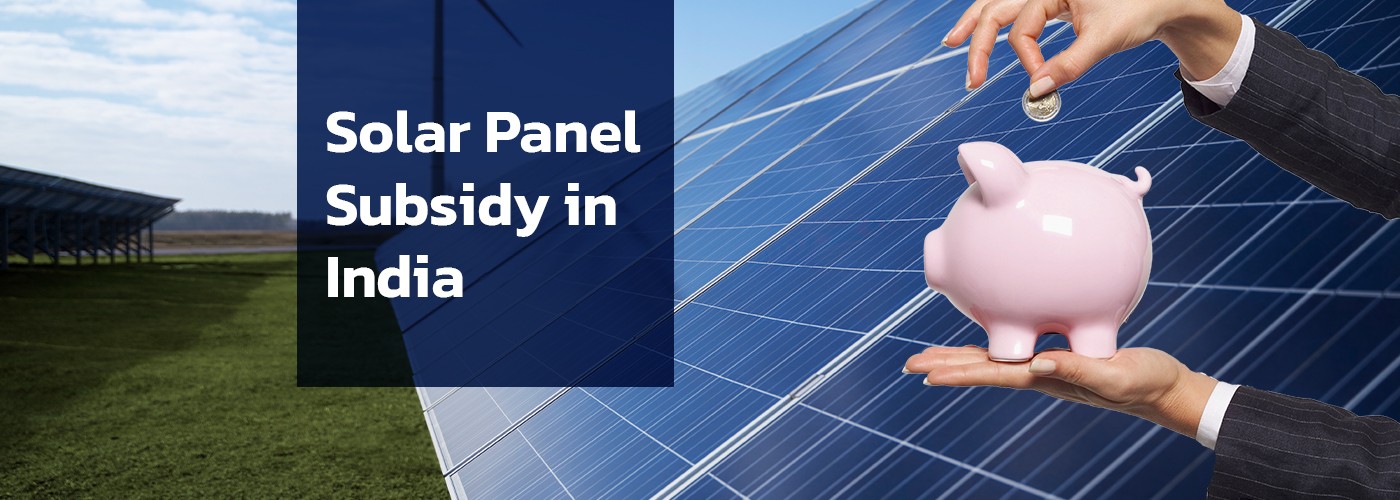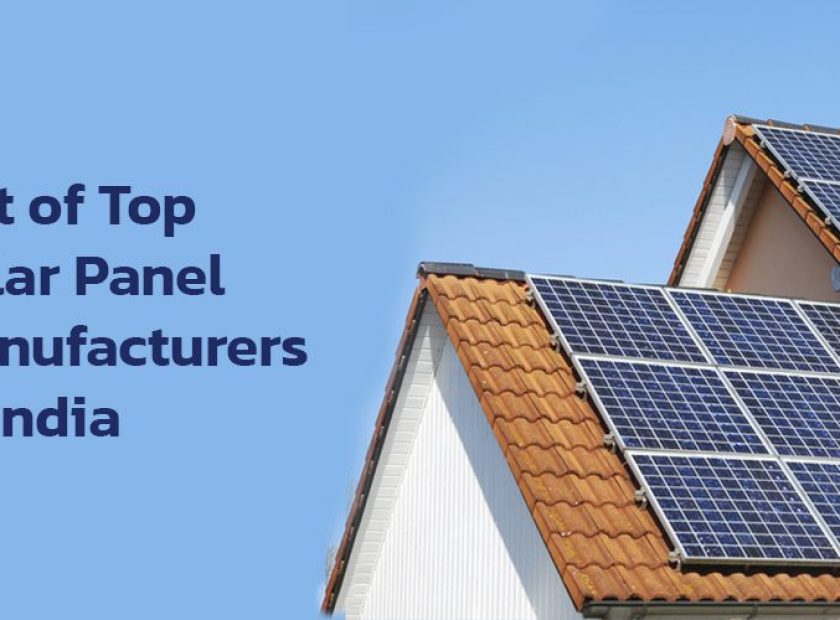Everything you need to know about Solar Panel Subsidy in India 2024

Solar energy is a popular green energy source that is powering homes, businesses, industries, and farmhouses. Thanks to its high renewable capacity, more and more consumers are turning towards solar energy to reduce grid dependence and cut monthly power expenses. The government of India is providing subsidy aid to encourage the use of solar systems for residential power needs. Everyone from small houses and large buildings to institutions and other large-scale cooperative housing complexes can benefit from solar subsidies in India. The subsidy scheme intends to reduce solar panel prices all over India for the housing sector. This blog will tell you everything you need to know about the solar subsidy.
Solar Subsidy in India
The solar panel subsidy program in India aims to encourage residential solar energy usage by offering financial assistance. The Central Financial Assistance (CFA) is provided by the Ministry of New and Renewable Energy (MNRE) for rooftop solar systems (RTS), facilitated through DISCOMs and state agencies. The CFA is directly transferred to consumers’ bank accounts.
The subsidy amounts vary based on system capacity and location. For most regions, solar energy systems up to 3 kW receive a subsidy of up to ₹14,588/kW. Systems ranging from 3 kW to 10 kW get ₹14,588/kW for the initial 3 kW and ₹7,294/kW for the rest. Beyond 10 kW, a fixed amount of ₹94,822 is provided.
In specific areas like northeastern states and challenging terrains (Sikkim, Uttarakhand, Himachal Pradesh, UT of Jammu & Kashmir, Ladakh, Lakshadweep, and Andaman & Nicobar Islands), slightly higher CFAs are applicable. For instance, households with up to 3 kW capacity receive ₹17,662/kW, and for capacities between 3 kW to 10 kW, it’s ₹17,662/kW for the first 3 kW and ₹8,831/kW for the remaining capacity. Above 10 kW, a fixed amount of ₹1,14,803 is given.
Furthermore, Resident Welfare Associations/Group Housing Societies (RWA/GHS) can benefit from ₹7,294/kW for capacities up to 500 kW @ 10 kW per house in standard areas, while in hilly regions, it’s ₹8,831/kW for the same capacity.
It’s important to note that the CFA is calculated based on either the module capacity or the inverter capacity, whichever is lower. Additionally, certain states like Jammu and Kerala offer separate state-specific solar subsidies in addition to the CFA to promote clean energy adoption.
Why does the Government give Solar Subsidy?
Governments offer subsidies for solar power primarily to promote the adoption of renewable energy sources like solar and achieve various economic, environmental, and social objectives:
I) Reducing Dependence on Fossil Fuels: By incentivizing solar power, governments aim to decrease reliance on non-renewable energy sources like coal, oil, and natural gas, thus enhancing energy security and reducing import dependence.
II) Stimulating Economic Growth: Supporting the solar industry can stimulate economic growth by creating jobs in manufacturing, installation, maintenance, and research and development related to solar technologies.
III) Energy Affordability and Access: Subsidies make solar energy more affordable for consumers, allowing them to adopt cleaner energy sources while potentially lowering their electricity bills. This is beneficial for rural or marginalized communities that may lack access to power grids.
IV) Technological Advancements: Subsidies encourage research and development in solar technologies, fostering innovation and driving down the cost of solar panels and associated equipment.
V) Meeting Renewable Energy Targets: Many governments set renewable energy targets or commitments to increase the share of renewable energy in their overall energy mix. Subsidies for solar power help in meeting these targets by incentivizing its adoption.
Benefits of Solar Subsidy
1. Encouraging Renewable Energy Adoption: Solar subsidies incentivize individuals, businesses, and communities to invest in solar power systems. This leads to increased adoption of solar energy, reducing dependence on fossil fuels and promoting a transition toward cleaner and renewable energy sources.
2. Cost Reduction for Consumers: Subsidies lower the upfront costs of installing solar panels and associated equipment for consumers. This makes solar power more affordable and accessible to a wider range of people, encouraging them to invest in solar energy systems for their homes or businesses.
3. Energy Cost Savings: Solar subsidies help consumers save on their electricity bills by generating their own electricity from solar panels. Over time, this can lead to significant savings on energy costs, especially in regions with ample sunlight and favorable solar conditions.
4. Environmental Benefits: Increased use of solar energy reduces greenhouse gas emissions and air pollution associated with traditional energy sources like coal or natural gas. Solar power generation produces clean energy without emitting carbon dioxide or other harmful pollutants, contributing to a healthier environment and mitigating climate change impacts.
5. Energy Independence and Security: By diversifying the energy mix and promoting local electricity generation through solar power, subsidies contribute to greater energy independence for regions or countries, reducing reliance on imported fossil fuels.
How to Apply for Solar Panel Subsidy in India
Recently, the government launched the National Portal for Rooftop Solar, to make the process for applying for solar much simpler. Now, consumers nationwide can easily apply for solar panel subsidies online and track their application’s progress until the subsidy is transferred to their bank account.
To qualify for the subsidy, specific criteria must be met:
1) Ensure that the entire solar project is implemented through the national portal. The application to the technical feasibility check to installation- every stage must be undertaken based on the portal procedure.
2) Consumers have to get their system installed through empaneled vendors (The list of state-wise registered vendors is available on the portal).
3) Only domestically manufactured solar panels (both module and cells) can be used.
4) Compliance with all MNRE guidelines and technical specifications is mandatory.
Steps to Avail the Subsidy
- Register and submit your application at solarrooftop.gov.in. No vendor or third party is allowed to do so on the beneficiary’s behalf.
- The DISCOM will conduct a technical feasibility study within the next 15 days.
- Once approved, you can install the system through registered vendors.
- After installation, you can apply for net metering and the request will be forwarded to the DISCOM.
- There will be an inspection of the plant and if all guidelines are met, a commissioning certificate will be issued.
- Once you submit your bank details in the portal, the funds will be credited to your account in 30 days.
Solar system price without subsidy –
1kW Solar System Price – ₹60,000-₹65,000
2kW Solar System Price – ₹1,20,000- ₹1,30,000
3kW Solar System Price – ₹1,80,000- ₹1,95,000
4kW Solar System Price – ₹2,40,000- ₹2,60,000
5kW Solar System Price – ₹3,00,000-₹ 3,25,000
10kW Solar System Price – ₹6,00,000- ₹6,50,000
Solar system price with subsidy-
1kW Solar System -₹ 45,412- ₹50,412
2kW Solar System- ₹90,284- ₹1,00,284
3kW Solar System- ₹1,36,236 – ₹1,51,236
4kW Solar System- ₹1,88,942- ₹2,08,942
5kW Solar System- ₹2,41,648 – ₹2,66,648
10kW Solar System- ₹5,05,178- ₹5,55,178
Conclusion
India’s solar panel subsidy program aims to promote the widespread adoption of solar energy among residential consumers and various sectors. This initiative not only reduces dependence on conventional energy sources but also offers financial incentives that make solar power systems more accessible and affordable. These efforts not only drive environmental benefits by reducing greenhouse gas emissions but also contribute to energy independence, cost savings, and a sustainable future for India’s energy landscape.




